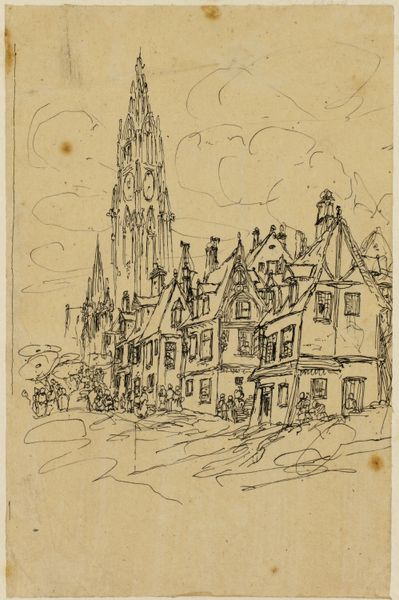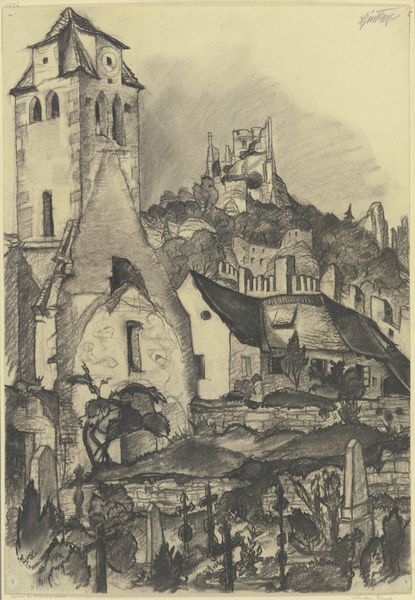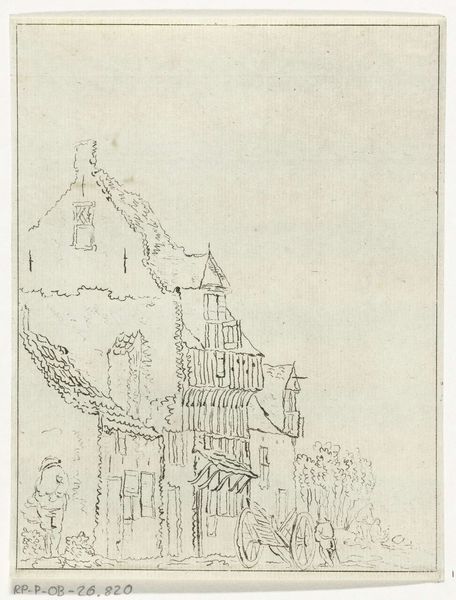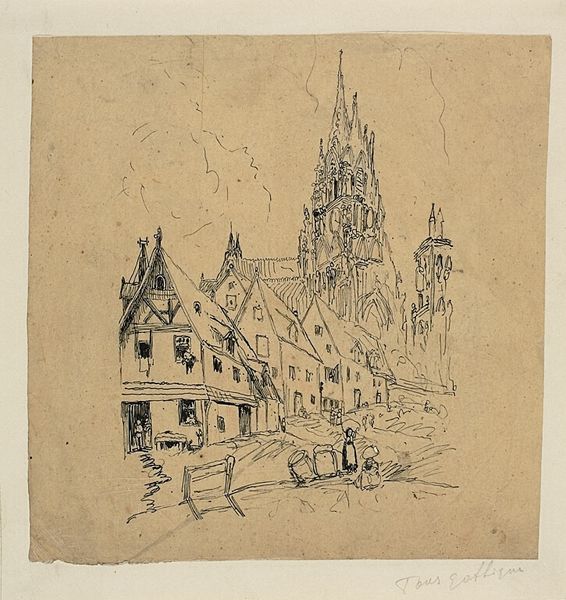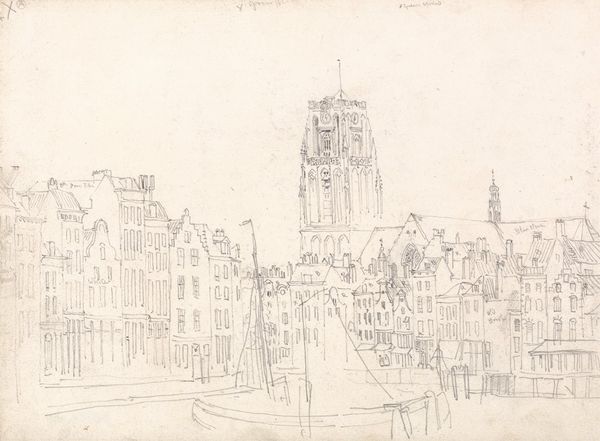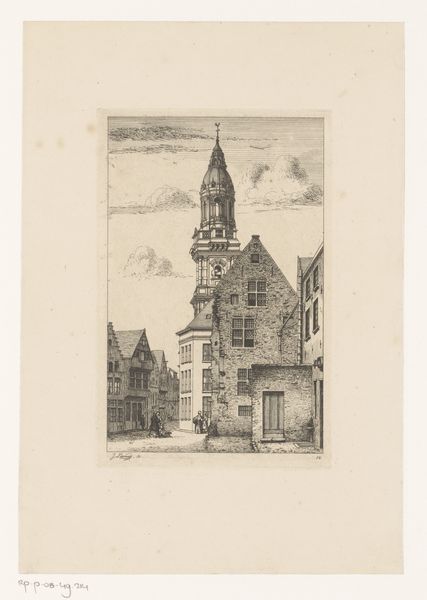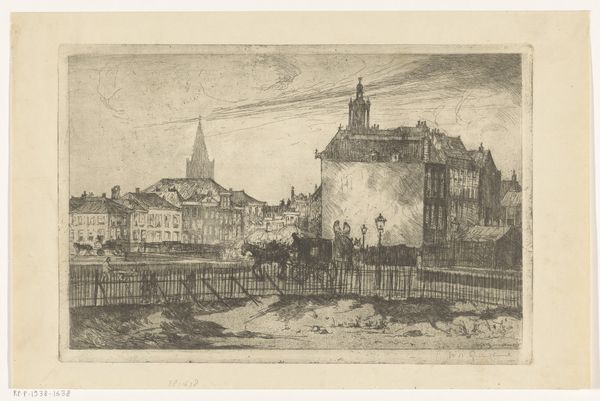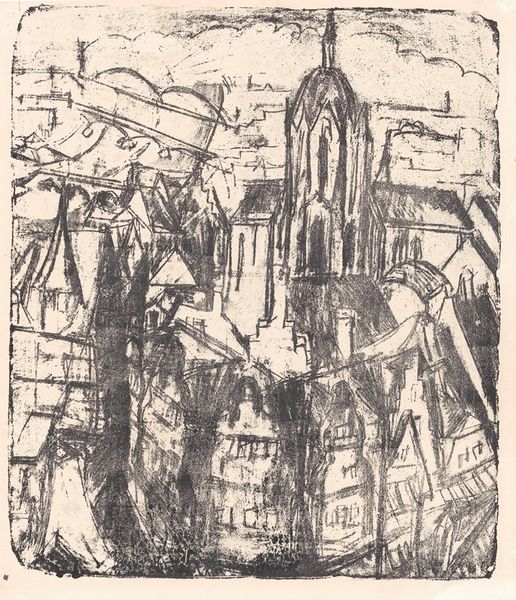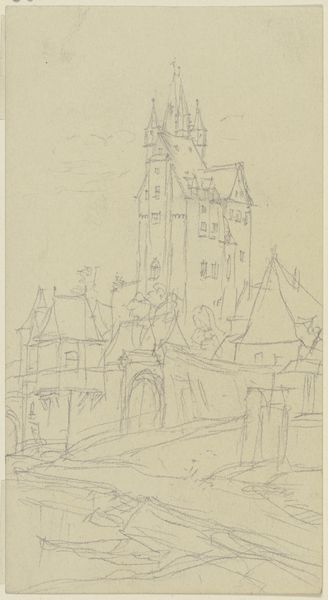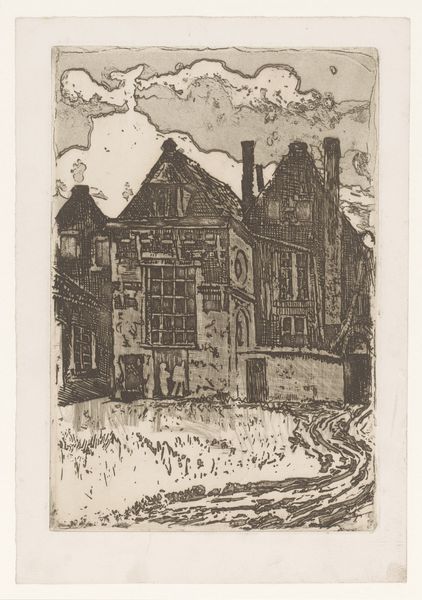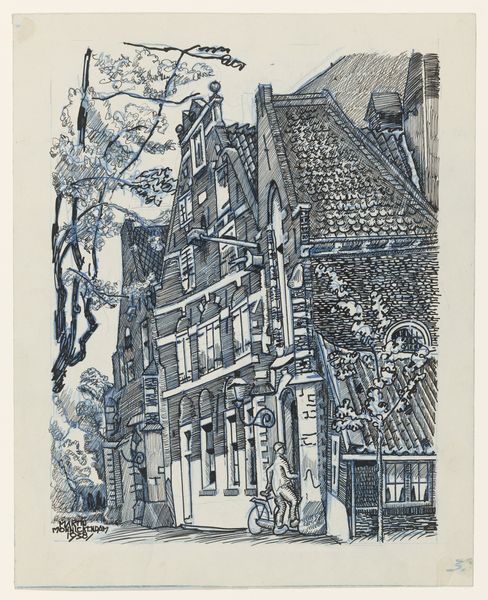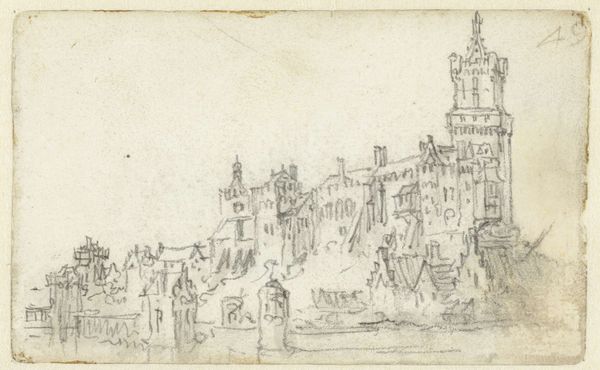
drawing, print, paper, ink, pen
#
drawing
# print
#
landscape
#
paper
#
ink
#
line
#
pen
#
cityscape
#
realism
Dimensions: 151 × 115 mm
Copyright: Public Domain
Editor: Here we have Rodolphe Bresdin's "Maritime Village," rendered in pen and ink on paper. The detail is incredible! It feels like peering into a very old, perhaps slightly worn, storybook illustration. What jumps out to you? Curator: Immediately, I'm drawn to the materiality of the piece. Consider the labor invested in creating such intricate detail with simple ink and paper. What kind of access to materials would Bresdin have had? And what sort of viewer was he anticipating for this work? Was it intended for mass reproduction or a more exclusive audience? Editor: That's interesting, I hadn't thought about the means of production. So, you're considering the social context and accessibility of the materials themselves. Curator: Exactly. The apparent ease of line might belie the very real physical effort involved in the act of drawing, especially when considering the scale of some of Bresdin’s larger works. What social class would have both the leisure to create something so detailed and the potential consumer to buy and collect the art? Were these images to disseminate political beliefs, such as the growing anti-industrialism? Editor: I see what you mean. The labor is literally embedded in the art. So how might the detailed, almost obsessive, rendering relate to emerging industrial printmaking processes of the time? Curator: Precisely. Bresdin and other artists were responding to an increasing mechanical reproduction. The drawing acts as a defiant statement exalting artisanal handwork. Perhaps this picturesque scene isn't just aesthetic; maybe it speaks to anxieties surrounding labor and mechanization. Editor: That adds a completely different dimension! Now I am questioning the social commentary implicit within his deliberate choices. Curator: Considering the material realities—who makes art, for whom, and with what resources—always reveals new perspectives. Editor: I am walking away from this work with so much more perspective than before.
Comments
No comments
Be the first to comment and join the conversation on the ultimate creative platform.

